All successful brands are great storytellers. They inspire, encourage, or even provoke their audience — and remain on the front pages. And they also use an impressive variety of tools and platforms to deliver their messages and cut through the noise.
We invite you to learn from the best emotional marketing examples and explore ways to tap into your audience’s emotions. We’ll also explain why feelings will always affect people’s decision-making processes, even when they are trying to think rationally. It’s not about manipulation — it’s about a deeper connection and understanding of human psychology. Read on to find out more!
Content:
What is emotional marketing?
Emotional marketing or emotional advertising is based on psychological triggers that make customers feel a certain way, help them remember a certain brand or product, and motivate them to act. The desired action may be a click, purchase, visit, call, or any other activity that implies closer contact with a brand.
As such, emotional marketing requires the use of mediums that are immersive and captivating:
- videos;
- podcasts;
- billboards;
- social media;
- packaging;
- merchandise, and other tangible items.
Usually, emotional marketing takes the form of a creative campaign that revolves around one strong brand message. But you can apply the principles of emotional advertising to literally anything, from the images you choose for your landing page to the language your chatbot speaks.
The importance of emotions in marketing
Why do we need to target emotions? Why can’t we just explain how good our product or service is? Because emotions come first.
It works like this. Stimuli from the outside world hit our thalamus and go straight to the amygdala, an ancient emotion center of the brain, and only then travel to our neocortex where all the rational thinking actually happens.
The emotional center processes information milliseconds earlier than the neocortex. That’s why sometimes we act irrationally — because our neocortex didn’t have enough time to intervene.
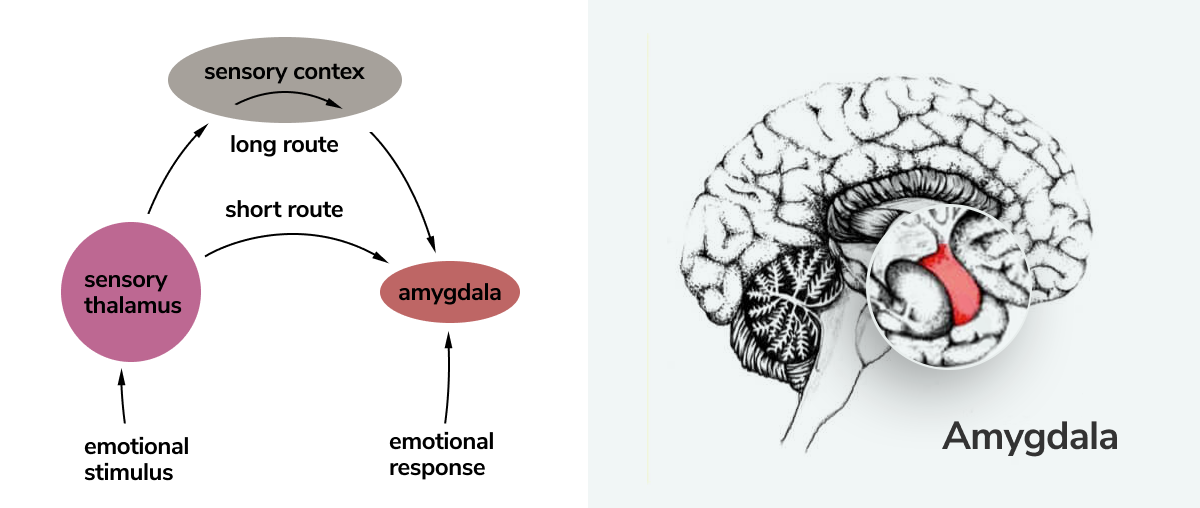
A strong emotional trigger creates a so-called amygdala hijack, during which we experience intense joy, stress, excitement, anger, or anxiety, depending on the type of the trigger. In emotional marketing, we can use “positive hijacking” to drive people to try new products or services and dissolve their fear of leaving their comfort zone.
Knowing this, you can create a strong emotional experience and connect with your customers on a deep level. The stronger emotional arousal following the experience, the brighter the memory for that experience. This is how you create brand impressions that last.
How to use emotional appeals in advertising?
Now that you know why emotions are crucial for any marketing campaign, let’s discuss how to leverage them without becoming too pushy or manipulative.
To use emotional appeals effectively, you need to know what kind of response you want to trigger and why. Here is the wheel of emotions that illustrates basic psychological states:
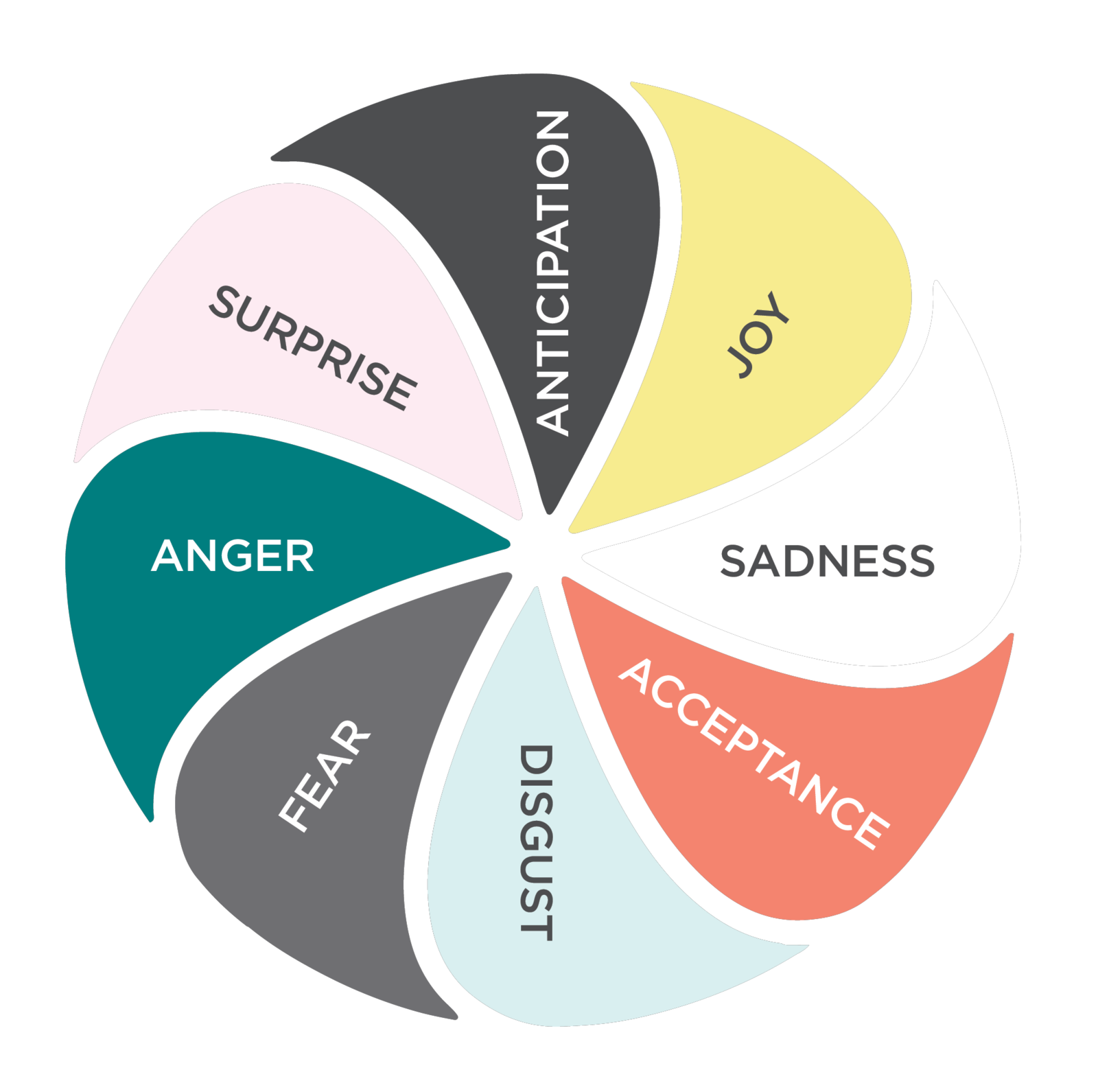
Push multiple buttons and create a complex experience that will make even indifferent observers come out of their shells. But, before you start, you need to study your audience. Know their fears, joys, pain points, concerns, and anticipations to predict how they’re going to react to your messaging.
The do’s of emotional marketing are based on established psychological patterns:
- Make it relatable. People are attracted to those who think and speak like them. Speak your audience’s language and make sure your audience gets your brand message in the right place at the right time.
- Spark curiosity. Surprising experiences are recalled more accurately. Channel your creative efforts and try to develop an idea or concept your audience has never considered before.
- Invite people to pause and reflect. Emotional marketing often means tapping into deep topics such as the importance of family bonding, risk-taking, mental well-being, the meaning of success, etc.
- Tease and provoke. Don’t be afraid to go to the extremes — bold statements, uncommon characters, controversial stories — to create an outstanding campaign that will make people question their choices and pay attention to your brand.
- Reimagine mundane things. Try to create a “wow” effect even if you market another type of milk or a pair of shoes. Present it in the most visually captivating way because people are far better at remembering what they see than what they hear.
- Invite your audience to become part of the group. Create a community of like-minded people on your social media and cultivate a sense of belonging for everyone who joins it — it makes people feel happier.
- Make people laugh. Having fun is a proven way to relieve stress and sharpen memory. When you make your audience smile, you create an emotional connection with them and help them remember your brand better.
Trying to impact the consumer mindset is walking on thin ice. There are a few explicit don’ts of emotional marketing:
- Don’t pick random influencers for your campaign. Carefully choose who represents your brand. For example, don’t hire a blogger with surgically enhanced beauty and no sports background to promote sportswear for athletes. Your audience will be quick to point out the mismatch and walk away.
- Don’t cross the line. Trying to play on stereotypes or appeal to a certain group by excluding others is a sure way to face some pushback. Try to include everyone in a conversation.
- Don’t mentor your audience. Remember Gilette? After years of cultivating a typical masculine image, they suddenly created an emotional campaign tackling masculinity stereotypes. Some people considered its tone fake and have lost trust in the brand. But the campaign still has gone viral, so no one knows for sure if it was a conscious provocation.
The main marketing lesson here: try to leave a positive impression on everyone who is going to see your ad or message. Avoid emotion-laden clickbait or murky tricks that make people purchase a product and regret it immediately after. Instead, strive to create a real emotional bond with consumers.
Emotional marketing examples — 10 brands doing it right
Let’s see how prominent companies use emotional appeals advertising to spark customer sentiment and generate buzz. Don’t be intimidated by the size and budgets of these brands. It’s all about the language you use and the stories you tell, and it can be done on any scale.
TSB Bank
The company’s latest video features a bakery owner proudly going through her workday and “owning it.” Customers observe her in awe as she goes. The video captures the confidence an entrepreneur gains once they open a TSB business account and secure their growing business.
https://www.youtube.com/watch?v=o86G1UdXGDo&ab_channel=EmmetMcGonagle
It’s a simple yet relatable campaign that conveys the exact emotion people want to experience when they start an independent business.
TSB Bank doesn’t overwhelm their potential clients with figures and legalese terms — they just demonstrate how easy it is to do what you love and earn money from it.
Coca-Cola
The most recognizable beverage company in the world decided to replace its logo with inspirational messages to share with loved ones. Online customization allowed users to write custom messages on the cans and send them to their friends or family as a little mood-booster.
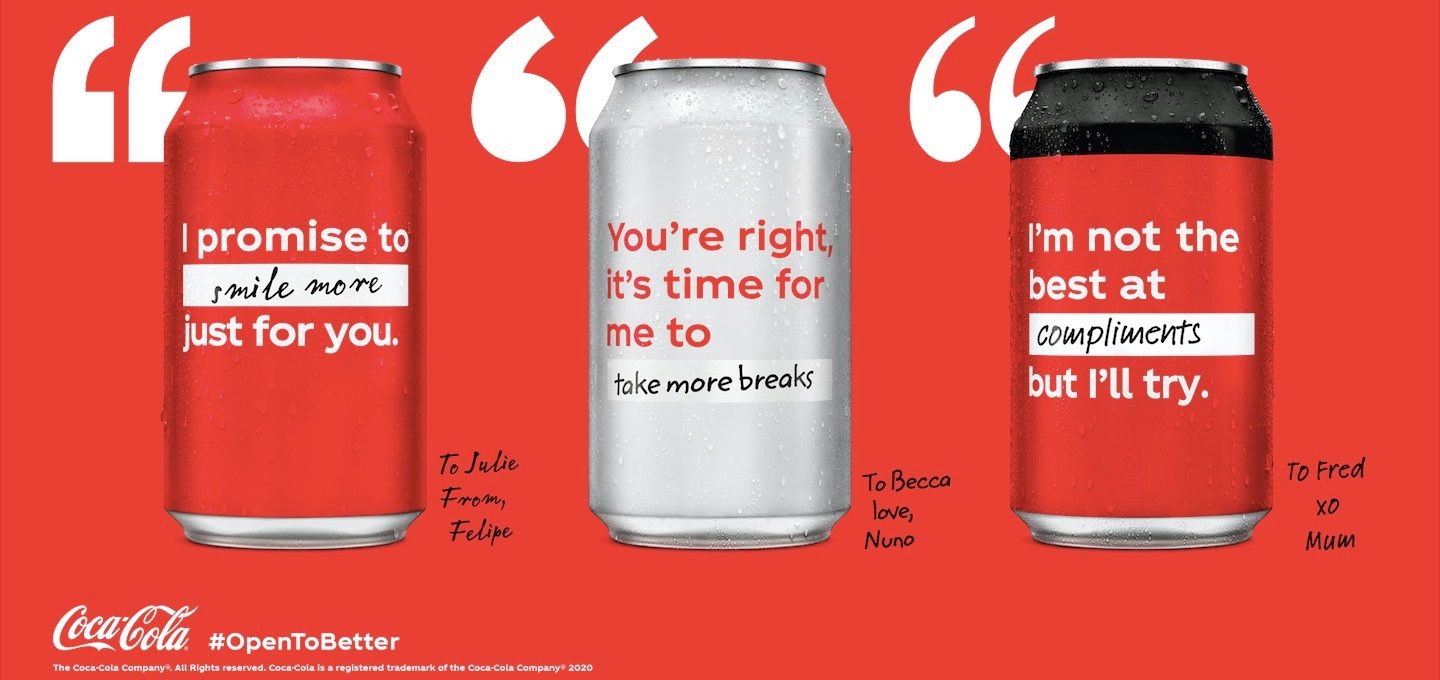
In times of the pandemic, brands rushed to create more meaningful, heart-warming, and upbringing experiences for consumers, and Coca-Cola certainly did it right. This experiment also showed that the company is even ready to give up its logo to inspire its customers and give them a reason to smile.
World Vision Finland
This organization focuses on protecting children in developing countries and defending their rights. To inform more people about their mission and encourage donations, World Vision Finland came up with creative billboards with texts purposefully made illegible — and triggered tons of discussions, especially on social media.
In fact, the clever billboards were illustrating the problem of illiteracy that many kids and adults all over the globe are still struggling with.
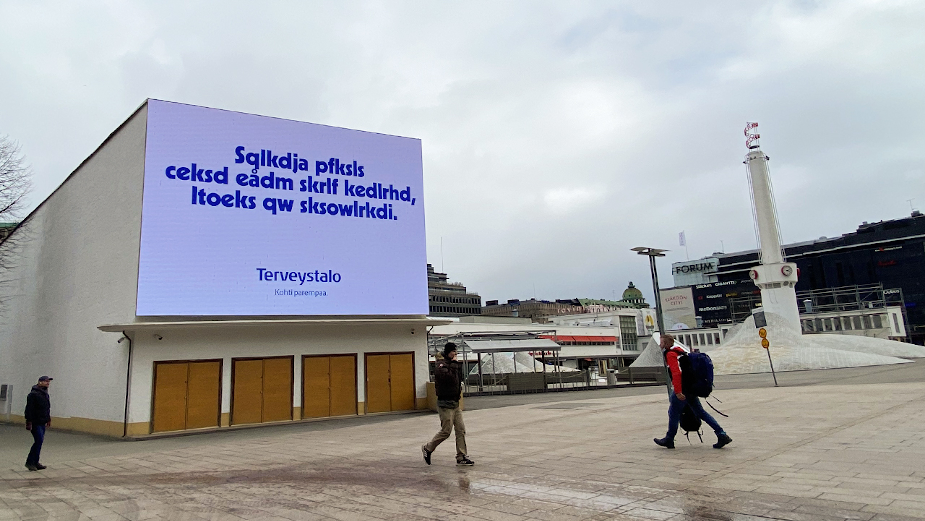
The campaign successfully raised awareness and public interest in the topic because it was both unusual and bold — pedestrians were curious to learn what those enigmatic ads could mean. The element of surprise and novelty made this campaign stand out.
Volvo
Car safety is the number one priority for many customers, and car manufacturers go the extra mile to prove that their cars are the safest on the market. But not many brands use emotional marketing as successfully as Volvo does when demonstrating that their car “looks after you like you look after others.”
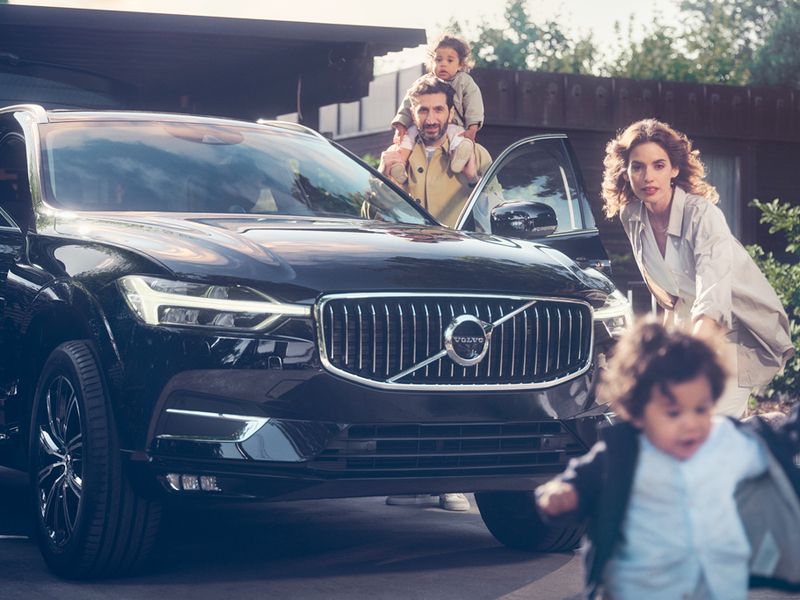
They pull at the customers’ heartstrings by showing a typical busy day that could easily turn into a disaster. The situation is too relatable and familiar to many, and that’s what makes the video work perfectly. Yet there is no fear-mongering — the brand just offers a smart and reliable solution that will keep all family members safe and sound.
Sheba
All cat owners know too well how active and noisy their pets can be in the early morning hours. Sheba, a brand of canned cat food, offered a neat solution — 4-am lullabies that would quickly put exhausted cat owners back to sleep. Lullabies include soothing ASMR podcasts on Spotify and YouTube videos with calming cat-themed visuals.
As of the time of writing, the video has over 600k views. This soul-warming storytelling is another elegant, non-manipulative emotional marketing example. The idea behind the campaign is easy to relate to, and the solution is fresh, amusing, and unique. As a result, cat lovers remember the brand and pay more attention to it in the future.
Heinz
This ketchup brand embarked on a mission to save its customers from getting bored to death while stuck in traffic. They bought ads in the navigation app Waze and targeted users traveling at the same speed as their ketchup when pouring from the bottle. Lucky drivers got an Impossible Whopper at Burger King for free, topped with Heinz Ketchup.
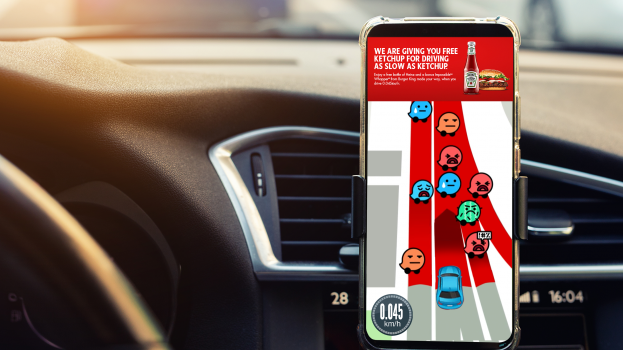
This emotional advertising is funny yet effective. Of course, bored drivers will remember the name of the ketchup brand that kept them entertained while they were struggling to get home. And, of course, they will develop new, positive associations with the name Heinz.
Cadbury
This confectionery company created a touching digital experience with the aim to help people go through the pandemic and surprise their close ones from a distance. The brand launched a virtual Easter egg hunt — users could hide a shiny Cadbury egg anywhere in the world using Google Maps and an augmented-reality app.
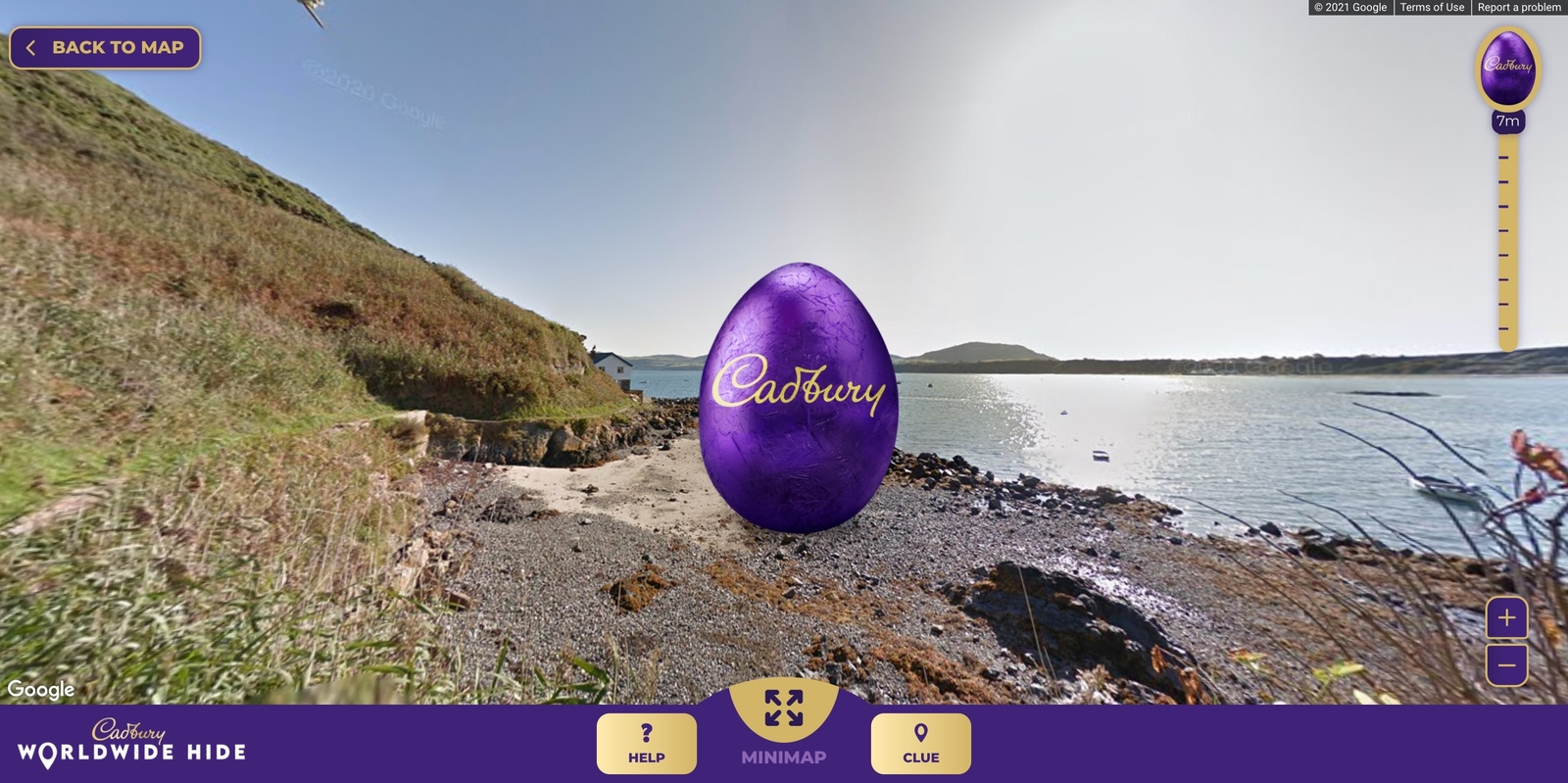
As brand representatives explained, the main goal of the campaign was “to help people feel close, even when they can’t be together.” They created a little adventure for their customers and boosted brand loyalty by helping people unite and connect in a new way.
Vanquis Bank
The “Walk Tall” campaign is pretty informal and mischievous for a bank, yet it perfectly reflects how it feels to start a journey to a better credit score and regain confidence in your future. The cat in the Vanquis video is walking through a crowd on its hind legs and obviously enjoys being the center of everyone’s attention.
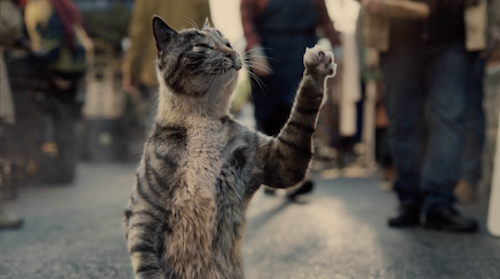
The campaign creates an emotional response — it’s hard not to smile when you see a cat strolling through the streets on all twos. This type of ad also allows the company to stand out and differentiate itself from its competitors with their monotonous videos about financial products.
Tim Hortons
This fast-food chain approached Mother’s Day creatively and offered limited-edition packaging for mothers to hide their donuts from curious family members. The boxes resemble books, but a close inspection reveals that they are to be stuffed with sweet treats. Tim Hortons also offers do-it-yourself Mother’s Day DIY donut kits featuring flower-shaped donuts that can be decorated by mom or anyone else in the family.
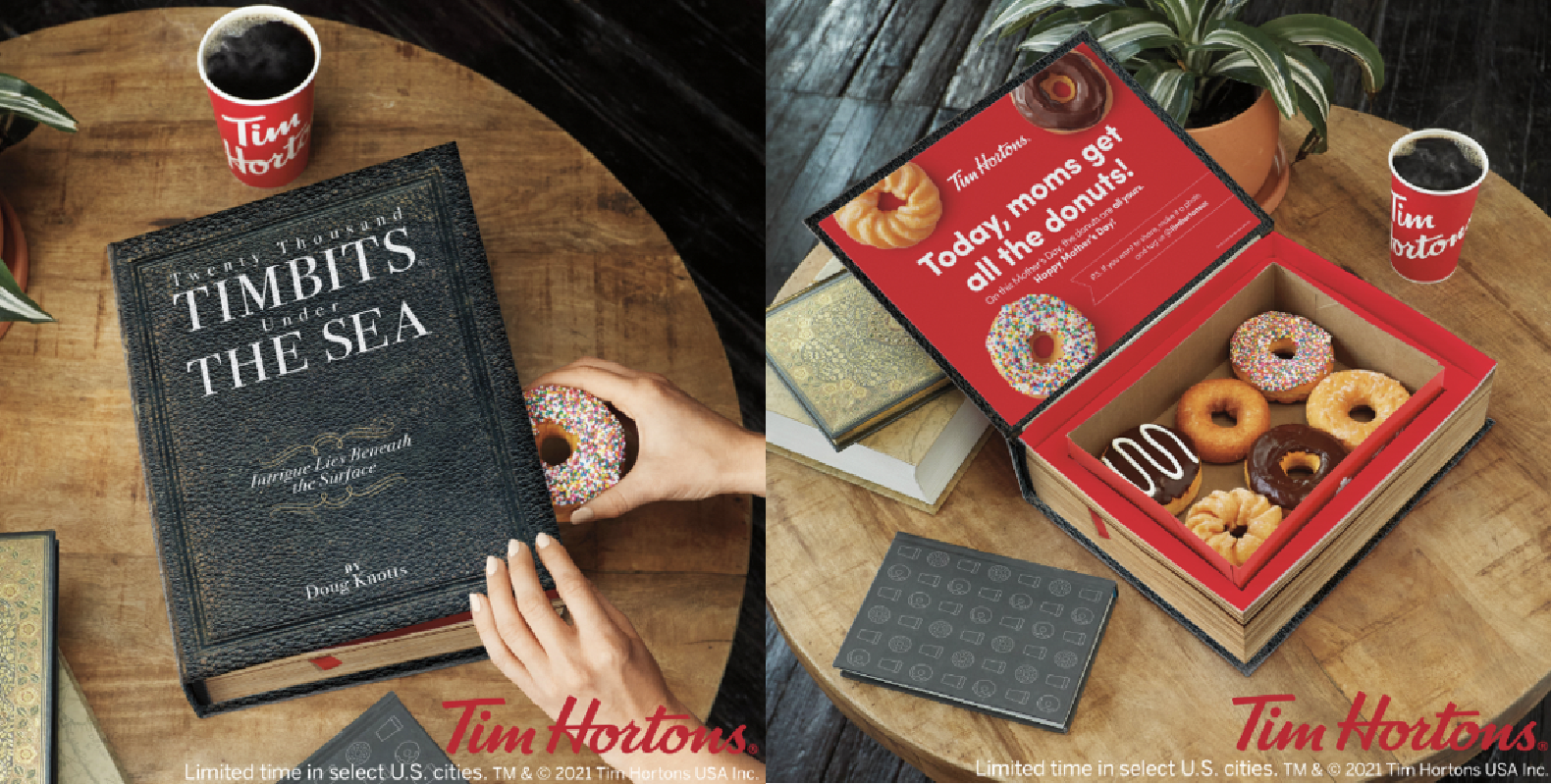
It is a playful campaign that breaks stereotypes and invites grownups to relax, spend time together with their families, and be a bit more selfish, at least on Mother’s Day. This type of emotional advertising also kills two birds with one stone — the brand subtly helps customers associate family occasions with ordering and sharing desserts from Tim Hortons.
Dettol
Dettol created a win-win situation by telling positive and emotional stories about local business owners who happen to represent the values Dettol stands for: commitment to quality, dedication, and true passion. The brand used the documentary format to make their storytelling more immersive — and these real-life stories seem to work better than typical pixel-perfect influencer content.

It’s a good example of a brand tackling deep topics and inviting its audience to think without mentoring or preaching anything. In its campaign, Dettol appeals both to the rational and emotional sides of its customers and ultimately sets itself apart from typical commercials with sanitizers fighting cartoonish microbes.
Let’s sum it up
We hope our emotional marketing examples inspired you to spice up your existing marketing strategy and create more unforgettable experiences for your customers or users. Experiment with different mediums, avoid repeating yourself, and aim to evoke a specific feeling. Out-the-box thinking is much more important in emotional marketing than having a bloated budget.
Of course, you will need a creative agency to pull off a large-scale emotional marketing campaign and create an unforgettable experience. Behind every ad, there are months of discussions and brainstorming, trials and errors. But nothing stops you from starting small.
How does the tone of your email copy affect your audience? Does it always trigger a reaction or slip through unnoticed? If the latter is true, adopting a fresh and active tone will help — learn more from our blog posts and knowledge base.
And if you aren’t familiar with our multichannel marketing platform yet, create your free account and explore its features. The best time is now!









